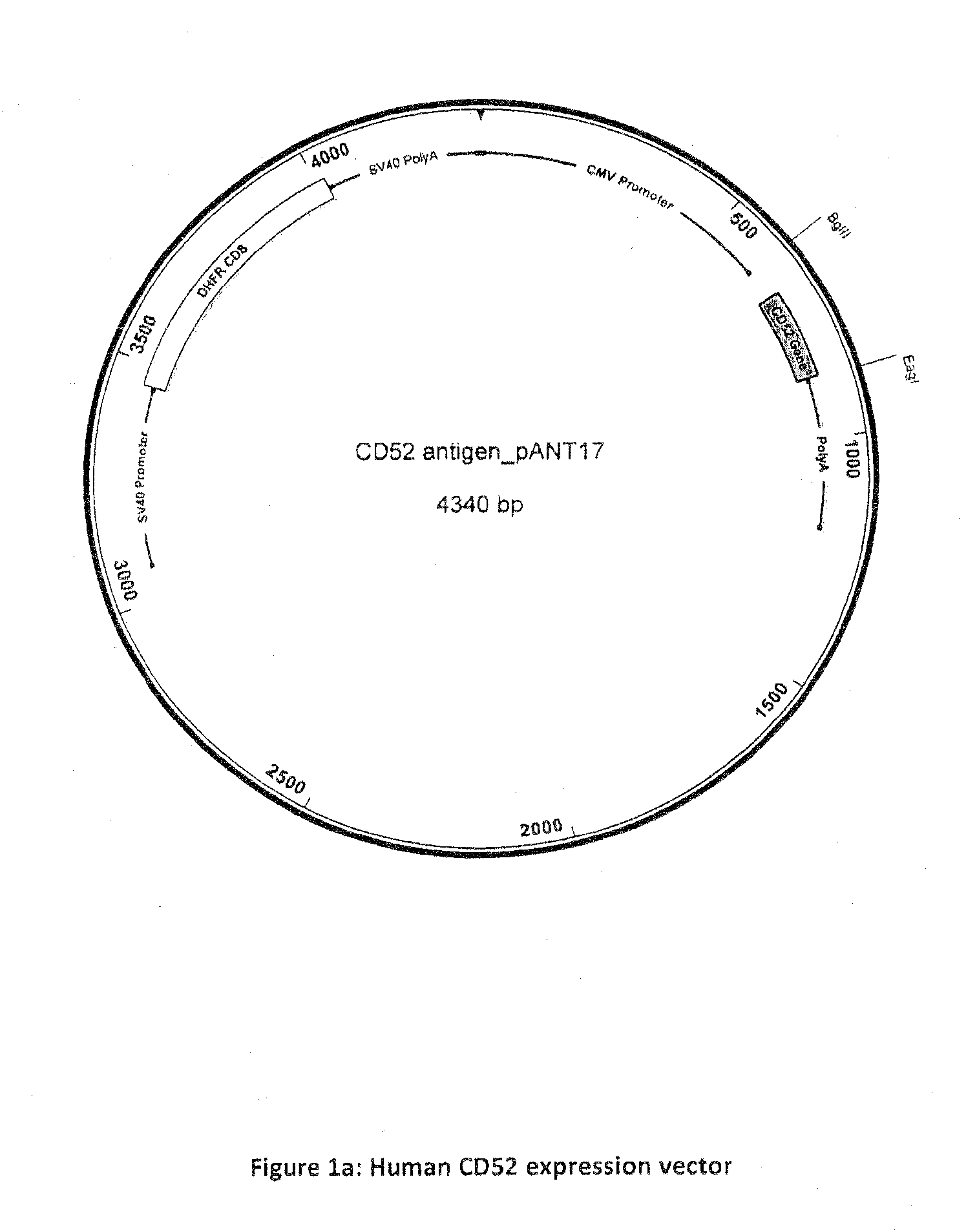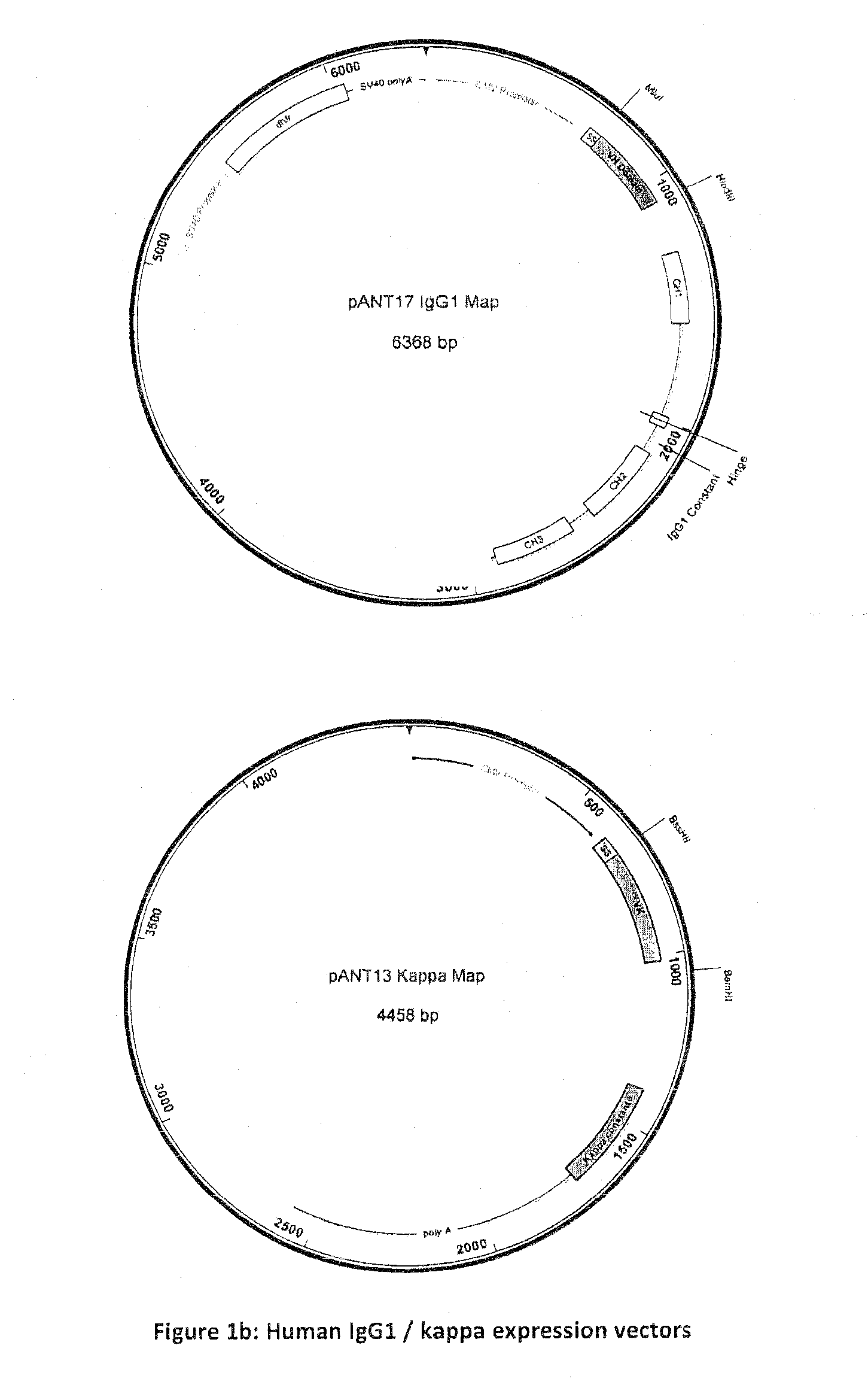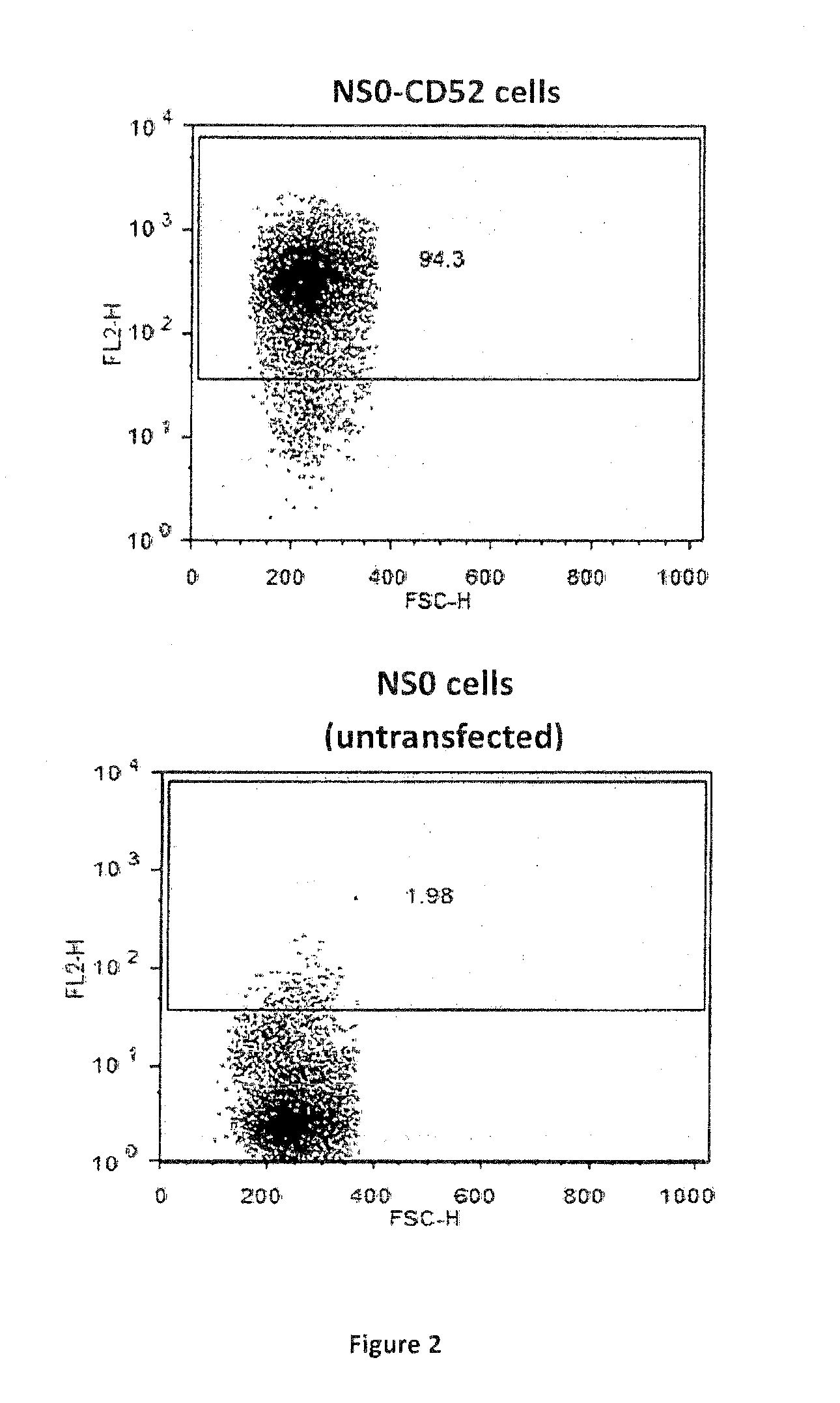Humanised anti-CD52 antibodies
an anti-cd52 and humanised technology, applied in the field of humanised anti-cd52 antibodies, can solve the problem of 1h is immunogenicity
- Summary
- Abstract
- Description
- Claims
- Application Information
AI Technical Summary
Benefits of technology
Problems solved by technology
Method used
Image
Examples
example 1
Generation of Mouse Monoclonal Antibodies
[0039]CD52 peptide (GQNDTSQTSSPSC) was custom synthesised and conjugated to either KLH or BSA via a maleimidocaproyl-N-Hydroxysuccinimide linker (Mimotopes, Wirral, Cheshire UK) leaving the peptide N-terminus free. Raji and HuT78 cells were obtained from ECACC. CD52-expressing NSO cell lines were generated as follows: DNA encoding human CD52 (NCBI Reference Sequence: NM_001803.2) (full length sequence including the N-terminal signal peptide, the C-terminal displaced GPI-anchor signal peptide and the mature GPI-anchored surface peptide) was PCR amplified and subcloned into pANT antibody expression vectors (FIG. a) via Bg1II and EagI sites. Transcription of the CD52 gene was under the control of the CMV I / E promoter (U.S. Pat. Nos. 5,168,062 and 5,385,839, University of Iowa). The pANT expression plasmid contained a mutant dhfr minigene (Simonsen & Levinson 1983, PNAS 80:2495-2499) under the control of a SV40 promoter and polyA sequence for sel...
example 2
Variable Region Gene Sequencing
[0047]Total RNA was extracted from 2E8 hybridoma cells using the RNAqueous-4PCR Kit (Ambion, Warrington, UK) and used to synthesis cDNA. Murine immunoglobulin heavy and kappa light chain variable (V) region fragments were amplified by PCR using degenerate mouse leader sequence primers (Sigma) and unique constant domain primers (Sigma) as shown in Table 1. The resulting PCR fragments were subcloned into the pGEM-T Easy I vector system (Promega, Southampton, UK) and inserts were sequenced using the vector-specific primer, M13Forward (Sigma) All DNA sequencing was performed by Geneservice Ltd, Cambridge, UK). The resultant V region nucleotide sequences are shown as SEQ ID No. 1 and SEQ ID No. 2 and corresponding amino acid sequences as SEQ ID No. 3 and SEQ ID No. 4 for heavy and light chain V regions respectively.
[0048]
TABLE 1SequenceName-PoolATGRASTTSKGGYTMARCTKGRTTTMulgVH5′-AATGRAATGSASCTGGGTYWTYCTCTTMulgVH5′-BATGGACTCCAGGCTCAATTTAGTTTTCCTMulgVH5′-CATGG...
example 3
Generation of Chimeric Antibody
[0051]The heavy and light chain V region sequences of the 2E8 monoclonal antibody were PCR amplified and subcloned into pANT antibody expression vectors (FIG. 1b) with heavy and light chain V regions cloned into pANT17 and pANT13 respectively. Heavy chain V region genes were cloned into pANT17 via M1uI and HindIII sites in frame with the human γ1 heavy chain gene (G1m3 (G1m(f)) allotype) and light chain V region genes were cloned into pANT13 via BssHII and BamHI sites in frame with the human kappa light chain constant region gene (Km3 allotype). Transcription of both heavy and light chain genes was under the control of the CMV I / E promoter (U.S. Pat. No. 5,168,062 and U.S. Pat. No. 5,385,839, University of Iowa) and the pANT17 plasmid contained a mutant dhfr minigene (Simonsen & Levinson 1983, PNAS 80:2495-2499) under the control of a SV40 promoter and polyA sequence for selection in eukaryotic cells. Both pANT17 and pANT13 contained a β-lactamase (ApR...
PUM
| Property | Measurement | Unit |
|---|---|---|
| equilibrium dissociation constant | aaaaa | aaaaa |
| Tm | aaaaa | aaaaa |
| pH | aaaaa | aaaaa |
Abstract
Description
Claims
Application Information
 Login to View More
Login to View More - R&D
- Intellectual Property
- Life Sciences
- Materials
- Tech Scout
- Unparalleled Data Quality
- Higher Quality Content
- 60% Fewer Hallucinations
Browse by: Latest US Patents, China's latest patents, Technical Efficacy Thesaurus, Application Domain, Technology Topic, Popular Technical Reports.
© 2025 PatSnap. All rights reserved.Legal|Privacy policy|Modern Slavery Act Transparency Statement|Sitemap|About US| Contact US: help@patsnap.com



